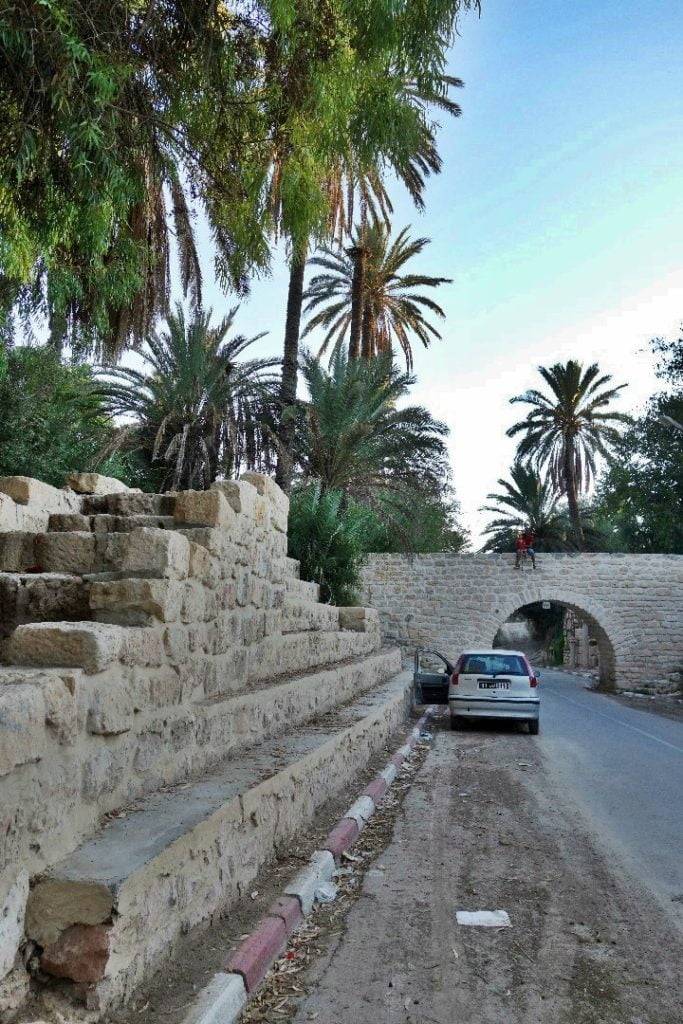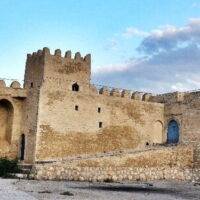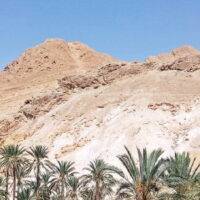Gabès – Tunisia’s marine oasis

Disclaimer: This post may contain affiliate links, which means that if you click on any of those links and make a purchase, I’ll get a small commission, at no cost to you, to help support this website.
Last Updated on November 5, 2022
Gabès, Tunisia, is the only marine Oasis located along the Mediterranean coast and one of the last oases of this type, in the world. Along the Tunisian East Coast, this thousand-years-old palm grove hosts more than 300 000 palm trees (the ones producing dates). Gabès used to be an essential crossroads between the desert and the coast for nomads and merchants. It is now facing several environmental challenges but still has a lot to offer to its visitors.
Disclaimer: This post contains affiliate links, which means that if you click on any links and make a purchase, I’ll get a small commission, at no cost to you.

Nowadays the city is slow-paced but the discovery of gas in the nearby gulf allowed for more dynamism. Unfortunately, the petrol industry turned a paradise into a mess, just take a look at the beach, and you’ll get what I mean. The nearby factory dumped fluorine and phosphogypsum, daily for 40 years, into the sea. For about 2 km along the shore around the factory, you won’t see any animals and not much vegetation. The water is super polluted, you won’t see anyone swimming there either.

Even if the coast is a disaster, the city still has some nice sights to offer. In Gabès, Tunisia, you can visit the souk and the medina, it’s not as impressive as the other ones you’ll see along the coast, but it’s cute and it has a small-village vibe.
If you’re into herbal medicine and home-made natural beauty products, Gabes is the place for you. It’s full of herbalists, find a translator and don’t hesitate to ask about local plants and their use. The souk is also famous for its carpets and covers, handcrafted in Gabes.

Nearby, Chenini is the best place to stay in Gabes; you can take a shared taxi from the louage station to get there. Once there, you can just walk around the village or borrow a bike.
You should visit the palm grove and witness agriculture in an arid climate. Apart from palm trees, you’ll see pomegranates, figs, apricot trees, grapes, and vegetables. Gabès is also Tunisia’s first producer of henna.
Water management in Chenini is hard as farmers have to pay for water and the nearby cement factory is pumping most of the water. The village is facing significant issues related to water. Several NGOs are working there to create a more sustainable system that would benefit all and preserve the oasis.

The entrance of the palm grove is near the zoo, it’s hard to find but it’s there. I advise against visiting the zoo, it was closed for maintenance when I was there but locals told me that this place is terrible.

Strolling around the village, you’ll pass by an ancient Roman Arch. The mosque is also worth a look. Near the center, you can see the old medina, notice how it’s built, with closed passageways to maintain a cool temperature inside.

Near Gabès, you can visit El Hamma and go to the hammam. The hammams there use naturally hot, spring water, they don’t need to heat it. Don’t forget to check the time for women and the time for men. The entrance fee is usually between 1 and 3 dinars.

In this area, they have several hot springs, in some places you can see the system they use to cool down the water and use it to water the plantations. Unfortunately, the water here is too hot to swim in.
Check out this travel guide to discover more amazing places in Tunisia.
Like it? Save it for later – Gabès, Tunisia










